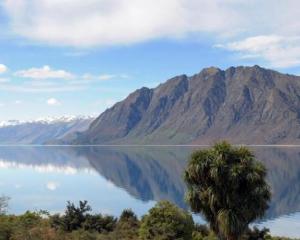
Some call the Treaty a simple agreement between many peoples. Others refer to it as Articles of Association to achieve a common cause.
It has been referred to as a contract between Māori and the Queen of England, or as a promissory pact between the Queen’s representatives and a diverse grouping of Māori chiefs.

A treaty is defined as a contract in writing between two or more political authorities such as states or sovereigns, formally signed by representatives duly authorised, and usually ratified by the law making authority of the state.
These days we appear to be not allowed to debate what the Treaty actually means in today’s world. Questions arise therefore as to why a treaty was needed between Māori and settlers.
In 1840 a disparate gathering of chiefs met at a place called Waitangi. Some of the more powerful chiefs feared for their loss of mana if they signed and called for Governor William Hobson to leave; other smaller tribes sought protection from the larger tribes by readily accepting the terms and conditions of what we now call the Treaty.
A famous Ngāpuhi chief of the time, Tāmati Wāka Nene called on Hobson to stay and preserve Māori customs but most importantly, protect the weaker tribes from being enslaved by the more powerful.
The killing and the slavery had to end. Reason enough for the signing of the Treaty.
The Treaty, crucially, served its purpose — that of ensuring sovereignty over New Zealand by Britain.
Without the signing of the Treaty, the country would have been lawless, or even worse — French.
Little is ever discussed about the intent of one Baron de Thierry, who in 1837 announced he intended to claim French sovereignty over New Zealand. Real or imagined the threat caused one James Busby to call a meeting and hopefully sign a hastily worded document — the Treaty.
The question however does arise: did Māori fully understand what their chiefs signed?
Was sovereignty explained and understood in its entirety with implications reaching far into the future? The answer is very unlikely.
Meantime the New Zealand Company settlers at Port Nicholson (Wellington) had already formed a "government" and appointed magistrates who were making laws just three months after the signing of the Treaty.
Hobson quickly issued a proclamation establishing sovereignty over all of New Zealand in May, 1840.
We should all be eternally grateful that through colonisation came the opportunity to end perpetual conflict and invoke the rule of law, albeit three months after the Treaty was signed.
Surveyors, cadastral maps and the Torrens system of land transfer didn’t exist within Māoridom which is probably why so many battles were fought between the tribes. There was a need for enforceable peace — something of an oxymoron perhaps.
Historians tell us that prior to the Treaty we have some missionaries to thank for supplying muskets to some tribes from about 1815 onwards who used them to good effect against those tribes who only had traditional weapons. No contest really.
It is conservatively estimated that 20,000 Māori were killed by other more powerful tribes armed with muskets. Little wonder the average age expectancy of Māori was 30.
In 1835 the peoples of the Chatham Islands (Moriori) were very effectively colonised by mainland Māori who enslaved the survivors.
These unfortunate people were forbidden to speak their own dialect, marry or practise their own culture, which all sounds very familiar when discussions about the colonisation of New Zealand and beyond occur.
Britain was the dominant power during the 19th century, just as the ancient Egyptians, the Phoenicians, Greeks and Romans colonised their known world.
Like it or not the world was and is shaped by conquest.
No partnership ever occurred between the colonising force and the conquered. Nor did one occur in New Zealand. Very few countries managed to escape colonisation.
The actual Treaty document appears to have lain dormant for many decades, which may well imply the Treaty had, for the most part, served its purpose.
The rancour we face today did not exist as the document was being slowly eaten by moths in a long forgotten draw somewhere.
We now face the politics of resentment as the articles of the Treaty are constantly reinterpreted to mean whatever any individual grouping believes they mean.
From academia to architecture, from industry to the arts, from medicine to the legislature, Māori who wished to do so, have excelled.
The Treaty therefore, in so many aspects, has been a real success, especially with the integration between the races.
If Te Pāti Māori and the Greens had their way, our differing worlds would be accentuated instead of being further integrated. A "them versus us" mentality would be further enhanced.
What then is the relevance of the Treaty today especially given the freely debated and accepted settlements by iwi all over the country?
It is foolish in the extreme to believe that power and authority can be obtained simply by demanding it with loud voices and threatening behaviour by a political minority. It’s time to move on.
• Gerrard Eckhoff is a former Otago regional councillor and Act New Zealand MP. Our usual Thursday columnist, Hilary Calvert, is on leave.











